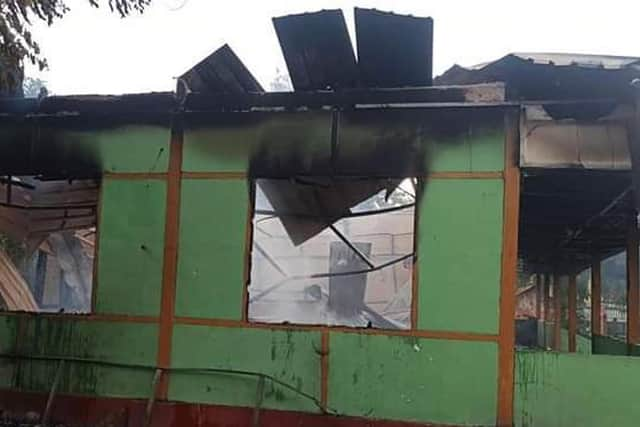Myanmar villagers say army beheaded high school teacher and impaled it on a spike
The incident marks the latest of many abuses alleged as the army tries to crush opposition to military rule in Myanmar.
According to witnesses' descriptions and photos taken in Taung Myint village in the rural Magway region, the headless body of 46-year-old Saw Tun Moe was left on the ground in front of the school's spiked gate and his head was impaled on top of it.
Advertisement
Hide AdAdvertisement
Hide AdThe school, which has been closed since last year, was also burned.
Neither the military government nor the state-controlled media have released information about the teacher's death.
Myanmar's military has arrested tens of thousands of people and been blamed for the deaths of more than 2,300 civilians since seizing power last year from the elected government of Aung San Suu Kyi.
US state department spokesperson Ned Price said on Twitter: "We are appalled by reports that Burma's military regime arrested, publicly mutilated, and beheaded a schoolteacher in Magway Region.
"The regime's brutal violence, including against educators, demands a strong response from the international community."


The United States officially refers to Myanmar by its old name, Burma, which was changed by a previous military government.
In September, at least seven young students were killed in a helicopter attack on a school in a Buddhist monastery in the Sagaing region in north-central Myanmar as tensions and violence continued to mount, threatening to spiral out of control.
Comments
Want to join the conversation? Please or to comment on this article.